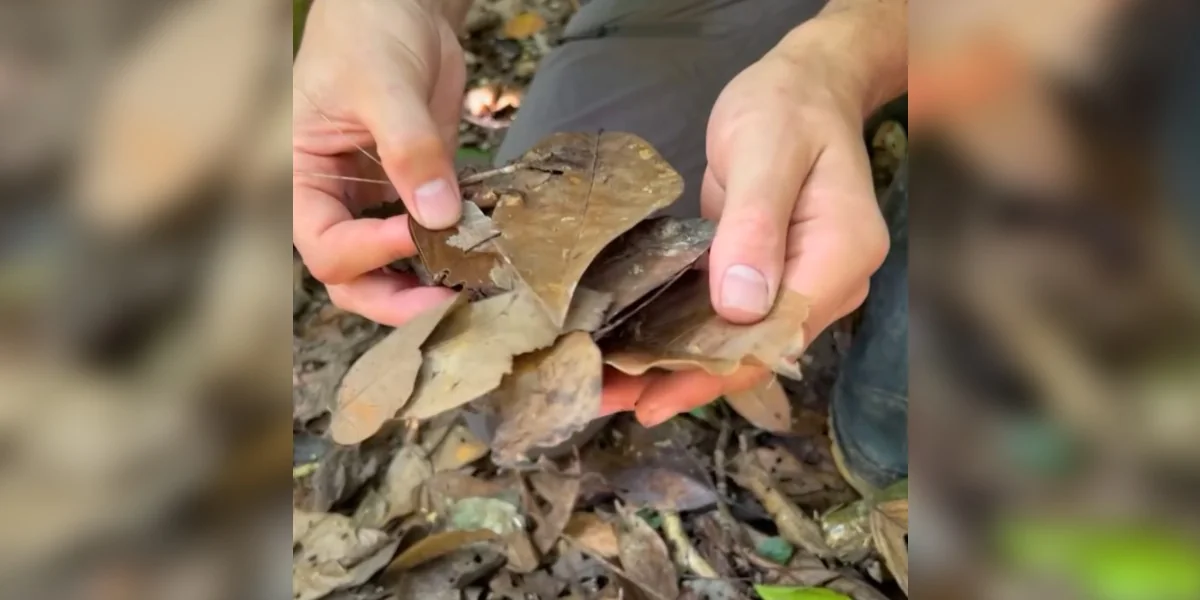“This thing is absolutely incredible.”
While hiking through Peru’s dense Amazon rainforest the other day, entomologist Phil Torres spotted a creature that most people tend to overlook. After carefully scooping up a pile of dead leaves, Torres sorted through the foliage one by one until one of them began to flutter.
“One of these leaves is actually an animal,” Torres said in a Facebook video.
The last “leaf” in Torres’ hand was a cricket-like insect called a katydid. While katydids share some similarities with crickets, like long back legs that allow them to jump and make sounds, there’s something that sets them apart from the rest: their unique ability to camouflage into their surroundings.
“Its legs look like a stick. Its wings look like a leaf,” Torres explained. “It even has little holes in it, as if it’s an old leaf. It’s got little notches taken out of it. It’s got veins just like a leaf. Incredible amount of detail.”The holes in the katydid’s body may seem like the result of an accident, but the small perforations serve a purpose; one that’s evolved over millions of years.
“Cryptically colored species, which blend in with the environment, rely primarily on the mimicry of vegetation,” Britannica wrote on its website. “The peacock katydid, for example, precisely mimics the discoloration of a dead leaf.”Torres was able to identify the peacock katydid just by seeing his body, reminiscent of dead foliage. But there was one test left to confirm his findings.
“Nothing about this looks like a peacock right now,” Torres said. “But wait until you see its defensive display.”
With a light tap on his wings, Torres activated the katydid’s defense mechanism. The dead leaf-like insect extended his wings, revealing a bright red and orange design mimicking a predator’s eyes.Thankfully, this katydid was in safe company with Torres, who just wanted to admire the unique insect. The dedicated entomologist has encountered countless fascinating insects, but the peacock katydid remains one of the most impressive.
“This thing is absolutely incredible,” Torres said.
